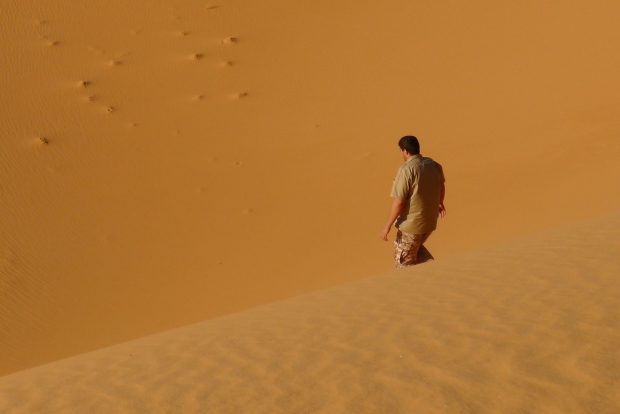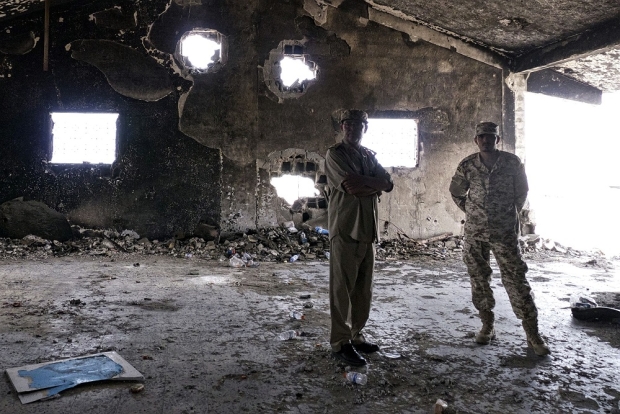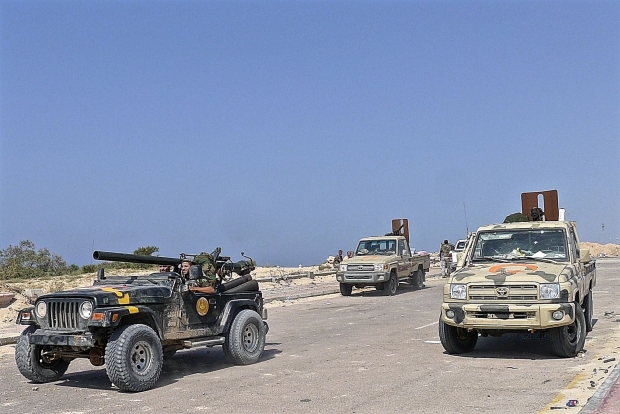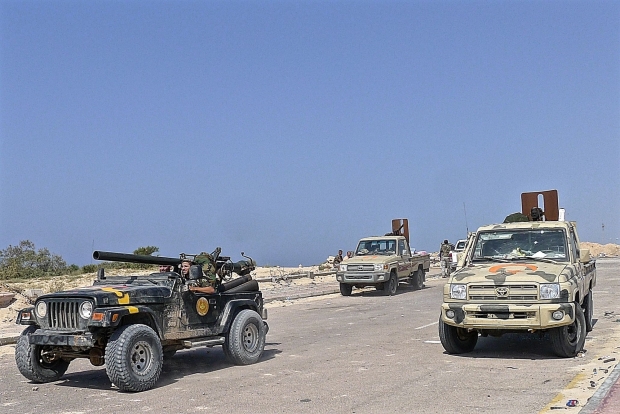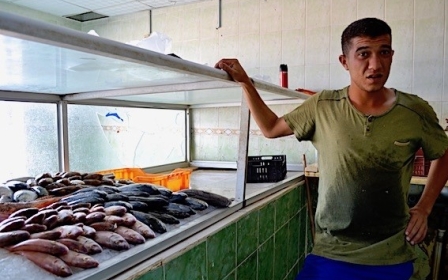Islamic State in Libya: Fighters are regrouping in the lawless desert
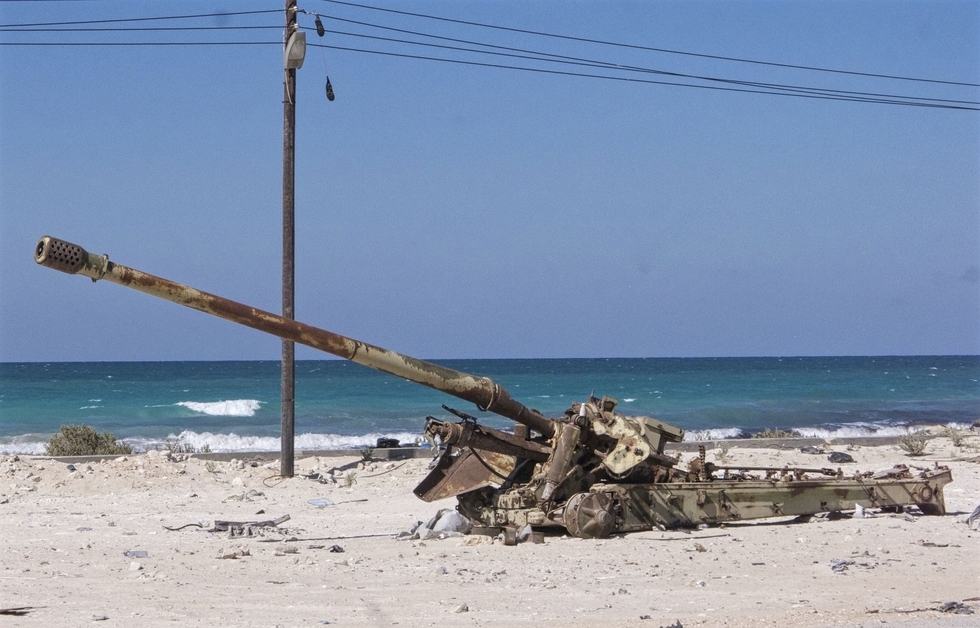
SIRTE, Libya - Driving towards Sirte on Libya’s coastal highway, Major General Mohammed al-Ghossri gestures towards the desert expanse stretching south and shouts over his shoulder: “That’s all IS down there.”
For years, Libya’s lawless desert south has remained largely outside the control of the country's competing governments. During the 2016 battle against the Islamic State (IS) in Sirte, senior IS leaders and fighters fled south into outlying desert and mountainous areas, where, largely unchecked, they have been able to regroup.
“Unfortunately, the Libyan desert is still full of IS forces, so we have to be very careful and stay alert, defending the borders of Sirte,” says Ghossri, admitting that the Libyan forces affiliated to the UN-backed Government of National Accord (GNA) had been unable to pursue IS into the desert following the liberation of Sirte.
Khalifa Haftar, the military commander under Libya’s eastern government, has some forces in the area, said Ghossri, "but the reality is that the south is totally out of any governmental control”.
“That area is now full of terrorists and they are becoming more active,” he said, describing a recent surge of IS attacks on remote desert villages and oil facilities, where security personnel had been assassinated and civilians kidnapped.
Colonel Ali Faida, commander of the Libyan forces currently securing Sirte, said his men were too poorly equipped to undertake desert operations, despite being fully aware of an increasing IS presence south of the town.
“We are very concerned about the areas south of Sirte because our intelligence reports show IS are very close, in the al-Jufra area, around 100km away from our last military positions,” he said. “But south of Sirte poses very challenging terrain and we are short of suitable vehicles to navigate this, so it’s very difficult for us to take control of this area.”
The reality is that the south is totally out of any governmental control
- Major General Mohammed al-Ghossri, Government of National Accord military forces
Faida said logistical support, already in short supply during the 2016 battle against IS in Sirte, had virtually stopped after liberation. He listed basic supplies his forces needed - spare parts and new tyres for military vehicles, ammunition and night vision equipment.
“We still do reconnaissance operations because we can’t just sit here waiting for IS to attack us. We have to seek them out before they seek us out,” he said.
“As it stands, they already attack us from time to time, just to show us they’re still there, and we have small battles. But the area south of Sirte is a very large and complex terrain, with many valleys, mountainous areas and marshland which, with our current limited capacity - especially our lack of suitable vehicles - makes these places secure hideouts for IS.”
Regrouping in remote desert and rural areas, IS fighters in Libya have been pushed into a role of insurgency and banditry to sustain themselves, lying in wait for passing motorists along the main road from the coast towards the central Libyan desert town of Sebha, attacking goods vehicles, fuel tankers and ordinary civilian cars.
IS swelling ranks with immigrant fighters
Faida said undocumented immigrants, moving easily across Libya’s porous borders, and who had previously made up many of the foreign fighters in Sirte, were also still joining IS.
“Illegal immigrants trying to reach Europe come to Libya looking for money and they get good money from IS. So according to our intelligence reports, the numbers of hidden IS fighters are steadily increasing with these foreign fighters,” he said. “During our most recent battle, we captured many IS foreign fighters and they confessed they had joined IS because the money was so good.”
“There is still a huge tendency of terrorists and radicals coming into Libya. IS dispersed all over the desert in all different directions and the threat they pose is very high,” said illegal immigration official General Mohammed al-Tamimi, who heads a checkpoint north of Sebha. “IS in the south are mostly those who fled from Sirte and escaped to Jufra, and new migrant recruits. They lurk around the road from Sebha to Jufra and set up fake checkpoints when they run out of stuff. They are quiet when they have supplies.”
He described existing IS forces in the desert as a mix of Libyans and foreigners, mainly from sub-Saharan African countries.
“What we have now are IS sleeper cells and we are trying to identify these, to make a database of them and their locations. We are working hard to get the situation under control,” Tamimi said.
“There are two valleys near there - Wadi al-Load and Wadi al-Bay, near Jufra - where most IS elements went into hiding after we defeated them in Sirte,” said Ghossri. “After their defeat, IS didn't give up, they just went underground. They are gradually spreading and they still pose a threat, but they will never build another state here and they will never raise their black flag in Libya again.”
Bani Walid’s fraught post-2011 relations with the city of Misrata, which led the anti-IS operations in Sirte, has also raised concerns locally about the possibility of IS finding shelter there.
Western forces remain in Misrata
Areas outlying Bani Walid have been targeted several times with air strikes carried out by the US Africa Command (Africom), most recently in June. Although local media and a Libyan human rights organisation claimed those June air strikes resulted in civilian casualties, Africom said only four IS militants, including an IS commander, had been killed, with no civilian casualties.
The US announced in December 2016 that it had ended its air campaign in Libya after achieving its core objectives, but it has since carried out at least ten declared aerial bombardments, mostly in the desert regions south of Sirte.
International forces from the US, Britain and Italy have also maintained military bases in Misrata since the war against IS began in 2016, and show no signs of leaving. Italy is estimated to have several hundred troops in a base in the city, ostensibly guarding a field hospital they set up in Misrata towards the end of the Sirte battle, with smaller numbers of American and British forces housed in separate, purpose-built bases, a Misrata source told MEE.
International forces from America, Britain and Italy have also maintained military bases in Misrata since the war against IS began in 2016, and show no signs of leaving
He added that they were only there “to protect their interests.” Other local sources insisted there were as many as 1,600 foreign forces stationed in Misrata.
Although help from international forces was welcomed during the 2016 Sirte battle, their low-profile but lingering presence has become increasingly controversial, with at least one Libyan military unit refusing to work with them.
After Sirte’s liberation, the US carried out drone surveillance operations and attacks but were apparently not permitted to accompany ground forces patrolling the Libyan desert, according to a member of Brigade 166. The unit was one of the last in Libya to pull out of Sirte after IS seized control, and also one of the only brigades under the GNA now deemed able to carry out desert patrols.
Suspicions over US agenda
Speaking on condition of anonymity, the brigade member said earlier this year that the Americans insisted they needed to investigate on the ground and were initially permitted to accompany two patrols with Brigade 166. The third time they asked, the Brigade’s commander refused, apparently suspecting ulterior motives or a hidden agenda.
Ghossri said IS in the Libyan desert were being monitored and kept under control by Africom and other international forces stationed in Libya. But the air strikes seem to have had little impact on IS's ability to carry out regular attacks in Libya's south, which have increasingly targeted civilians and the military.
On 25 July, IS attacked a checkpoint and police station in the desert town of Aqilah, killing two soldiers and allegedly raising their flag over the police station before being beaten back into the desert, where 12 militants were killed in fighting.
Ghossri’s confidence that IS would not be able to seize control of Libyan territory as it did in 2015 was not shared by the tribal elder, who pointed out that IS thrives where there is civil conflict and division.
“Libyans fighting Libyans provides the perfect environment for IS to flourish, as we saw before,” he said. “And if Libya’s divisions continue, IS will return.”
This article is available in French on Middle East Eye French edition.
Middle East Eye propose une couverture et une analyse indépendantes et incomparables du Moyen-Orient, de l’Afrique du Nord et d’autres régions du monde. Pour en savoir plus sur la reprise de ce contenu et les frais qui s’appliquent, veuillez remplir ce formulaire [en anglais]. Pour en savoir plus sur MEE, cliquez ici [en anglais].


